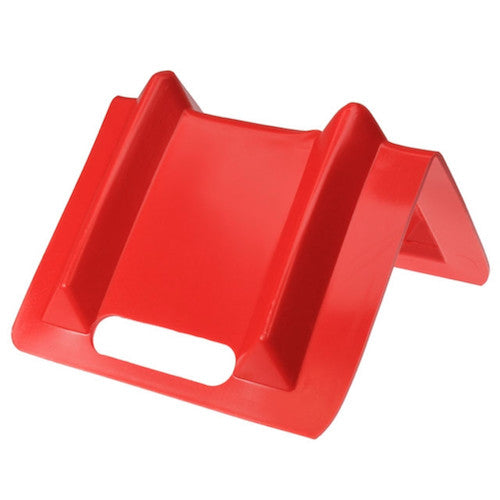The Nine Days, Nine Flavors of Navratri: A Culinary Journey of Significance &ndash
Introduction
Navratri, the vibrant Hindu festival celebrated over nine nights, is not only a time of spiritual reflection but also a culinary journey through a spectrum of flavors. Known as “Nav Ras,” each day of Navratri is associated with a specific flavor that adds depth and significance to the festival. In this blog, we’ll delve into the concept of the Nav Ras and explore the unique dishes that embody these flavors. Get ready for a tantalizing culinary experience as we journey through the nine days of Navratri.
Day 1 – Sweet (Madhur)
Nav Ras: Sweetness
The sweetness of Day 1 symbolizes purity and new beginnings. To start Navratri on a sweet note, indulge in dishes like Sabudana Kheer or Sugarcane Juice sweetened with jaggery. These treats mark the beginning of the festival with joy and positivity.
Planning to make Sabudana Kheer? Get the DONIV Triply Saucepan, your ideal companion for crafting that delicious Sabudana Kheer
Day 2 – Sour (Amla)
Nav Ras: Sourness
Sourness on the second day represents the desire to cleanse the body and soul. Enjoy a tangy and wholesome meal with dishes like Amla Rice or Masala Chaas (Spiced Buttermilk). The sourness is believed to aid digestion and detoxify.
Cook Amla Rice using the DONIV Triply Saucepan for a healthier and more delectable dish.
Day 3 – Salty (Lavana)
Nav Ras: Saltiness
Salty flavors on Day 3 signify stability and balance. Savor the simplicity of dishes like Rock Salt Potato Wedges or Navratri Special Samosa filled with a salty potato mixture. These flavors represent the strength and resilience of the goddess.
Experience the joy of making Navratri Special Samosas with the DONIV Frypan in your kitchen.
Day 4 – Spice (Tikha)
Nav Ras: Spiciness
Spiciness on the fourth day ignites passion and devotion. Spice up your Navratri with fiery dishes like Sabudana Khichdi with Green Chilies or Spicy Arbi Fries. These flavors evoke the fervor and enthusiasm of the festival.
If you haven’t already, it’s time to grab your Doniv frypan and start cooking up some spicy Navratri recipes
Day 5 – Bitter (Katu)
Nav Ras: Bitterness
Bitterness on Day 5 reflects the challenges in life. Embrace the bitterness with dishes like Karela Chips (Bitter Gourd) or Methi Thepla (Fenugreek Flatbread). These flavors remind us of the need for resilience and growth.
Get DONIV Smart Cookware for this festive season and explore new Navratri recipes every day.
Day 6 – Astringent (Kashaya)
Nav Ras: Astringency
Astringency on the sixth day signifies restraint and control. Enjoy soothing dishes like Coconut Chutney or Cucumber Raita to balance the palate. These flavors promote inner harmony and self-discipline.
It’s time to make some yummy flavors for Day 6, be ready with DONIV Smart Cookware
Day 7 – Pungent (Katu)
Nav Ras: Pungency
Pungent flavors on Day 7 awaken the senses and represent the desire for transformation. Savor dishes like Navratri Paneer Tikka or Kuttu Ki Poori with Spicy Potato Curry to invigorate the taste buds.
Experiment with a delicious recipe on the seventh day using the DONIV Triply Kadai.
Day 8 – Umami (Lavanya)
Nav Ras: Umami
Umami on the eighth day symbolizes contentment and fulfillment. Relish dishes like Rajgira Paratha or Navratri Sago Pulao for a wholesome and satisfying experience.
This festive season, be the masterchef of your house with 9 days, 9 recipes with your supporting partner DONIV Smart Cookware
Day 9 – Aromatic (Gandha)
Nav Ras: Aromatics
Aromatic flavors on the ninth day signal the conclusion of Navratri with a sense of completeness. Celebrate with dishes like Dry Fruit Laddoos or Saffron Rice Kheer that offer a fragrant and delightful end to the festival.
Finally, the Navratri ends with some aromatic dishes. This festive season, enjoy & understand the significance of Nav Ras!
FAQS
What is the significance of Nav Ras in Navratri?
The Nav Ras, or Nine Flavors, represent different qualities and aspects of life during the nine days of Navratri. They add depth and significance to the festival, symbolizing various emotions and characteristics.
What is the purpose of these different flavors during Navratri?
Each flavor represents a unique quality or emotion and is believed to influence our physical and spiritual well-being. They guide individuals on their path towards self-improvement and enlightenment during Navratri.
Can these dishes be enjoyed by people who are fasting during Navratri?
Yes, many of these dishes are suitable for those who are fasting during Navratri. They are prepared using ingredients that are typically allowed during fasting, such as sabudana, potato, and rock salt.
What is the overall significance of Navratri in Hindu culture?
Navratri is a major Hindu festival celebrated over nine nights, dedicated to the worship of the goddess Durga. It signifies the triumph of good over evil and is a time for prayer, fasting, and cultural celebrations.
Are there regional variations in Navratri dishes?
Yes, Navratri dishes can vary by region and personal preferences. Different Indian states and communities may have their own traditional dishes and ways of celebrating Navratri.




